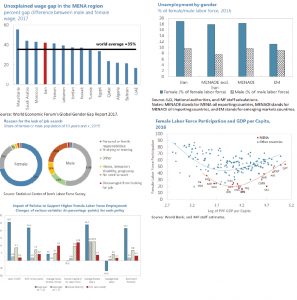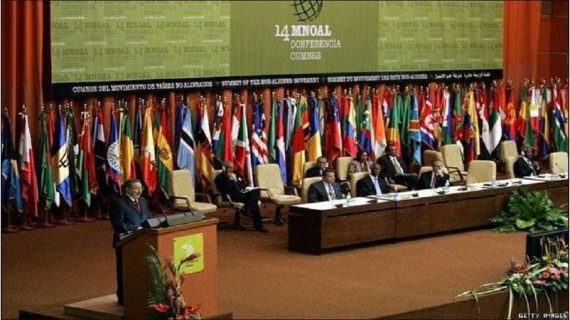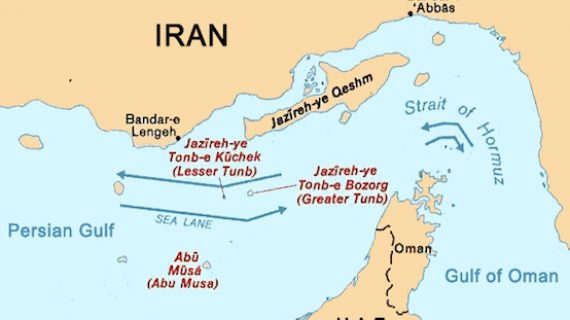Support Women’s Employment to Boost Long-Term Growth
Iran’s highly educated women represent an untapped source of growth and productivity
Reported by HPMM Group according to FINANCIAL TRIBUNE ; Iran has made tremendous strides in eliminating gender gaps in education and health indicators.
For about a decade now, there has been virtually no gap between male and female enrollment in primary and secondary education. The gender gap in tertiary education enrollment is small and, in some fields of studies such as engineering and science, women are now in the majority. Years of schooling attained by women have expanded by 40% within one generation to reach an average of 9 years.
The fertility rate in Iran has fallen sharply in the last 30 years and has been below two children per woman since the 2000s, and on par with the average of advanced economies. Life expectancy at birth for women is higher than for men by 2 years (76.7 versus 74.5 years).
Despite these laudable achievements, women’s participation in the labor force is low. Female labor force participation (FLFP) was 16.2% in 2016, lower than countries with similar income per capita, including within the Middle East, North Africa, Afghanistan and Pakistan region.
Some 83.8% of all women over the age of 10 are inactive and out of the labor force—the fourth highest rate in the world—۳٫۲% of women were unemployed and only 13% were working.
Women represent 13.3% of legislators, senior officials and managers and hold 3.1% of seats in the parliament. Iran has two vice presidents who are women, reads the latest report compiled by the International Monetary Fund on Iran’s economy. Excerpts follow:
Once in the labor force, women in Iran are also more likely to be unemployed. In 2016, the women unemployment rate of 18.9% was twice as high as men’s. Although the average unemployment rates for men and women are broadly in line with the MENAP average, women’s unemployment rate exceeds the emerging market average of 11%. Furthermore, a woman in Iran is likely to remain unemployed longer. While 30% of men remain unemployed for less than 3 months (versus only 11% of women), almost 48% of women remain unemployed for more than 19 months (versus only 28% of men).
Iran’s highly educated women represent an untapped source of growth and productivity. Increasing FLFP can significantly boost GDP, productivity, tax collections and alleviate the expected burden of aging.
Why Is FLFP Low in Iran?
The low level of job creation in Iran, especially in the private sector, has limited women’s chances of finding work. One of the main determinants for women to enter the labor force is the availability of job opportunities.
Due to the reliance of the Iranian economy on oil and the importance of state-owned sector, each percentage point of non-oil GDP growth increases employment by just 0.2 percentage points. Although 614,000 jobs were created in Iran in 2017, a majority were in the agriculture and low-skill service sectors and did not match the skill-set of Iran’s highly educated women college graduates.
The rate of FLFP in Iran is also underestimated due to the high prevalence of informal employment and underreporting of part-time work. Iranian officials estimate that the informal economy comprised 36.5% of total GDP in 2016.
Informal employment is relatively high among women in Iran, including among high-skilled women (in contrast to international experience), who for social and economic reasons underreport work. The Central Bank of Iran reports that part-time employment represented 5% of the 5 million total jobs held by women reported in the Labor
Force Survey in 2016, but this estimate is likely understated.
Gender-based legal restrictions may also deter women from participating in the labor force. International studies have found that gender-based legal restrictions are correlated with low FLFP.
The World Bank’s Women, Business and the Law: 2016 study found that Iran had 23 gender-based legal restrictions on women’s employment and entrepreneurship, the third highest number in the world. For example, married women need to obtain their husband’s permission to start a business, to apply for a passport and can be required to ask permission to get a job (although typically not used).
Income tax deductions are granted only to the husband (Direct Tax Act Article 101). On the plus side, wage equality is explicitly guaranteed for women (Labor Code Article 38). While job advertisements and hiring processes can exclude women, officials report that they have removed gender caps in the civil service recruitment rounds for several ministries.
The fact that women often earn less than men may also have created disincentives for women to join the labor force. Although many countries have equal pay legislation, all continue to have gaps in the salaries earned between men and women, which cannot be explained by observable individual and job characteristics (the so-called “unexplained wage gap”).
The lack of individual level data on wage earnings in the Iranian household survey has precluded an accurate estimate of the level of the wage gap between men and women in Iran.
However, based on a survey conducted by the World Economic Forum, the pay premium between men and women for similar work is estimated to have been 42% in 2017, placing Iran 99th out of the 131 countries surveyed.
Personal and family responsibilities have also deterred women from seeking formal employment. In a 2015 labor force survey, conducted by the Statistical Center of Iran, 72% of Iranian women replied they were not looking for a job because of personal and family responsibilities, compared to only 2% for men.
IMF suggests three policies to encourage greater women’s participation in the labor force in Iran:
Reducing the Gender Wage Gap
Reducing the “unexplained” wage gap between women and men has the potential to double female labor force participation rate over the long run.
If the “unexplained” wage gap of 40% in the formal and informal labor markets is reduced by half, the number of women in the labor force doubles to 80%, as both higher and lower skilled women increase their supply of labor in response to more attractive wages.
In equilibrium, the average wage of a woman working in the formal sector increases by 23% (and by 36% in the informal sector).
Reducing the unexplained wage gap also boosts the size of economy and government tax collections. The expansion of FLFP increases women’s income, pushing the demand for goods and services up, and thus spurring production. This virtuous cycle helps the level of real GDP to grow by 26% in contrast to the scenario of no change in policy.
The government’s total revenues grow 22% (from 15% to 18% of GDP) due to the higher collection of consumption taxes, labor taxes (due to higher number of workers in the formal sector) and corporate taxes (given the boost in formal production).
Even in the case where the wage-gap between women and men is more moderate, a narrowing of this gap can still produce economic gains.
Given the fact that Iran’s equal pay laws and its large share of public sector employment limit the possibility for wage discrimination, an alternative calibration where the unexplained wage gap in the economy is reduced from 20% to 10% is simulated. The reduction in the gender pay gap boosts real GDP by 2.6% and total revenue collections by 2% (from 15.1 to 15.4 percent of GDP).
Women’s average earnings in the formal and informal sectors rise by 13%, reflecting both the lower pay gap and the extra incentives to pursue more education, which in turn improves women’s productivity and earning potential in the labor market.
Reducing Costs/Obstacles
Lowering the costs for women to join the labor force can also enhance long-term growth. As noted above, 72% of Iranian women did not look for a job because of personal and family responsibilities.
The IMF model captures this as a cost in the family’s utility function when a woman works outside the home. However, national education campaigns that limit gender bias and encourage women who wish to pursue careers outside the home can over time reduce the cost and stigma for women who wish to work.
Such policies are manifested as a drop in the disutility cost, which in turn translates into an increase in FLFP participation by 10 percentage points. This increase in FLFP boosts real GDP by 8.7% in the long run and increases government revenues by 6.8%.
The rise in FLFP boosts the earnings of both women and men. This reform encourages highly educated women (usually richer) to join the labor force, as their absolute returns from work are higher. The higher competition among skilled workers in the formal sector induces investment in human capital, which in turn boosts workers’ productivity, leading to higher salaries for both men and women. Average earnings rise by 13% for women and 4% for men.
Specifically, human capital of the formal economy increases because families invest more in education given the return in the form of higher earning capacity, more high-skilled women opt to join the labor force and the increase in formal labor force participation also raises human capital formation through learning-by-doing, meaning they get more skilled while working.
Subsidizing Childcare Costs
Providing targeted subsidies for childcare costs to low- and middle-income mothers can boost women’s employment in the formal sector.
The effects of a targeted childcare subsidy to mothers are simulated from the bottom 70% of the income distribution working in the formal sector. The subsidy is proportional to the number of hours worked in a formal job and at its maximum, it is equivalent in value to the universal cash transfer for a woman working full time. Such a reform generates a 40% increase in FLFP in the formal sector.
However, there is a partial crowding-out effect, as older women can leave the labor market due to competition in this sector. In net terms, women work 10% more hours. While the framework assumes all men always work, they also benefit from this reform as their average earnings increase by 2% because the reform induces households to spend more on education, such that at the steady-state, both men and women are more educated, increasing their expected earnings.
The childcare program boosts the economy and government revenues. The childcare subsidy reform increases the level of long-term real GDP by 2%. Government revenues increase by 3.2% due to higher income and labor tax payments collected from women working in the formal sector and offset the expected cost of the child-care subsidy program (0.7% of GDP).
Income inequality as measured by the Gini coefficient falls, since the reform targets women from lower deciles of the income distribution.








